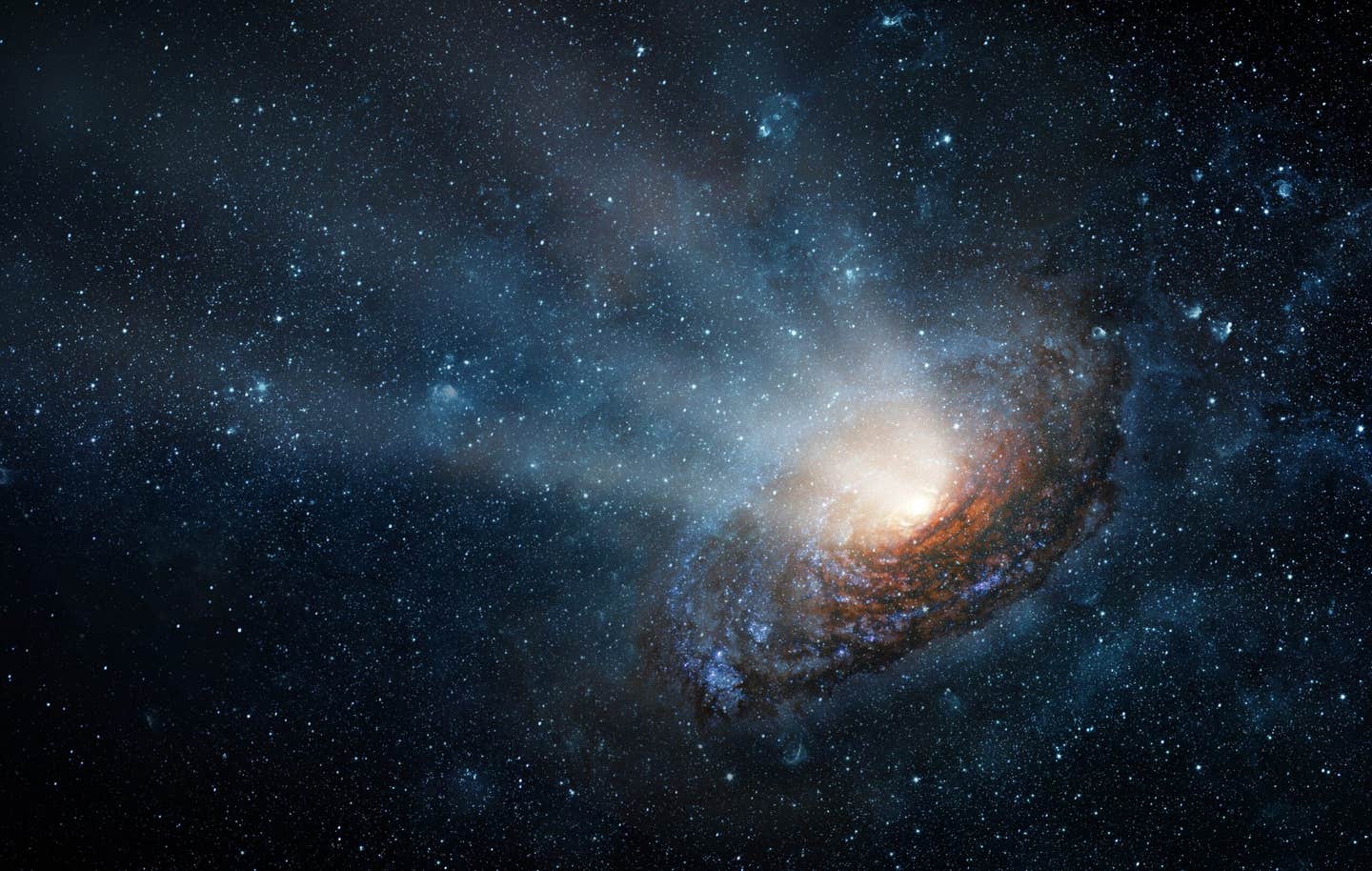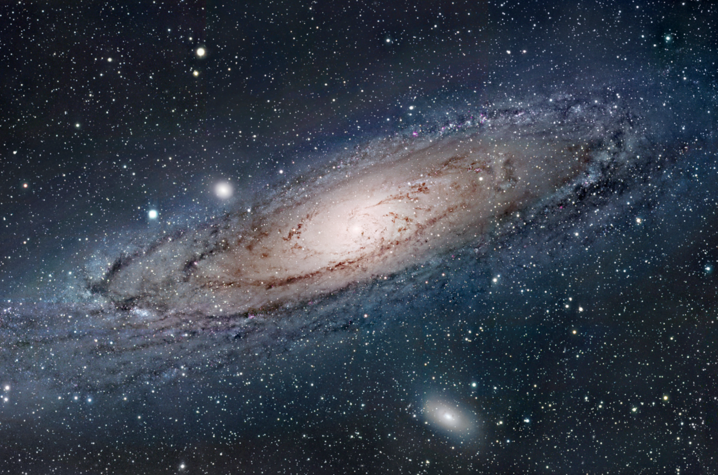Astronomers witness most powerful black hole flare ever — as bright as 10 trillion suns
Astronomers track the brightest black hole flare ever recorded and uncover a massive star torn apart 10 billion light years away.

 Edited By: Joseph Shavit
Edited By: Joseph Shavit

A distant supermassive black hole produced the brightest flare ever recorded, likely caused by a giant star torn apart inside its disk. (CREDIT: Shutterstock)
Astronomers generally assume that active galaxies may shift and flicker, since their central supermassive black holes tend to feed in uneven and sometimes chaotic forms. Even with all that activity, scientists weren't expecting to observe a massive explosion of light from the remote galaxy.
In 2018, the supermassive black hole (named J2245+3743) brightened more than forty times and briefly became one of the most powerful sources ever observed. At that point, the flare was shining as bright as 10 trillion suns and carried the energy equivalent of a star completely transformed into radiation.
If one were to envision a moment where something in the universe seems to burst forth with an eternal shout, this was one of those rare instances. It was a bright flash of light from a location 10 billion light-years away from Earth, meaning the phenomenon occurred when the universe was still very, very young.
As that light was traveling toward us across expanding space, the fabric of time stretched along with it. "Seven years in our time is two years in their time. We are watching the event play out at one-fourth speed," says Matthew Graham, the project scientist for the Zwicky Transient Facility at Caltech.
A Rare Discovery in Plain Sight
For decades, active galactic nuclei have been shown to undergo rapid increases and decreases in brightness due to changes in the gas inflow being pulled into the black hole. However, the case of J2245+3743 changed everything.
What caught everyone off guard was the sudden increase in light from its light-curve peak; its rapid brightening was therefore atypical of the standard behavior of accreting black holes. Automated celestial surveys that observe the skies every night picked up the change, flagged it, and astronomers rushed to the telescopes to confirm what they were seeing.
The object did not appear particularly special at first when observed. A spectrum obtained shortly after the discovery displayed no unusual features. Eventually, however, the flare dimmed much more slowly than someone studying it would have expected.
When researchers compared the new observations taken in 2023 to previously collected pictures of the object, they realized it was much brighter than anyone thought. A second spectrum from the W. M. Keck Observatory showed even more detail about the extreme brightness, and the flare originated from an active galactic nucleus already hundreds of millions of times more massive than our own Sun.
K. E. Saavik Ford from the City University of New York says that once the group confirmed the brightness was real, they began to explore what could explain the event. They ruled out a supernova quickly because even the most powerful celestial explosions do not have enough energy output to match this object. They also ruled out gravitational lensing, which would not allow for a lengthy brightening of years without expecting to observe some alterations in color or shape.
When a Star Meets a Giant
The final candidate remaining on the list was rather sobering. A large star had likely wandered far too close to the black hole and was subsequently torn apart—a phenomenon astronomers term as a tidal disruption event. In this instance, the star appears to be at least 30 times greater in mass than the Sun. Many TDEs involve less massive stars and are associated with the relatively minute flares.
Furthermore, most TDEs occur near a dormant black hole instead of something that's already actively feeding on gas. It seems the star in this case likely traveled directly through the disks of the black hole. The explosively shredded remnants collided with gas swirling around the disk. This impact likely energized the star’s flare and sustained its brightness for years to come.
Graham elaborates on the event with evocative words. The star, he says, is “a fish only halfway down the whale’s gullet.” The black hole evidently hasn't finished gobbling it all up yet. If you can conceptualize it in that way, it helps with visualizing the entire encounter. An enormous stellar object meets a force vastly stronger than itself, and, piece by piece, gets ripped apart, while each piece provides even more fuel to the intergalactic inferno.
Observing the Extreme Gives New Insight
Events of this nature are quite rare, and estimates so far suggest that there are only about 100 tidal disruption events reported currently. Flares in active galactic nuclei may also be difficult to identify because the black holes are glowing at all times, and that additional light can be concealed by the excess background. Modern surveys of the skies can change that, however.
Projects such as the Zwicky Transient Facility and the Catalina Real-Time Transient Survey have a long enough record of the sky to be able to observe the subtle, slow changes that earlier examinations could not discern.
The flares emitted from J2245+3743 now represent the most powerful and most distant AGN flare recorded to date. It provides insights into what can happen inside the dense and violent accretion disks that may surround supermassive black holes. The light curve shows the flare increased rapidly to a peak and then declined with a long lingering tail. The spectra indicate how the emission changed with time. The X-ray observations, albeit limited, indicate an absence of an observed X-ray jet. Together, the clues lead us to believe that a star's remnants may have been shocked and trapped in the disk.
You may ask yourself, why does it matter, as this happened billions of years ago? To science, each flare such as this represents the individual growth and changes that take place within galaxies. Their centers are crowded with stars and gas that interact in many ways, and we are still not certain of the details.
When a black hole tears a star apart, bursts of light allow scientists and researchers to explore how these giant masses feed. They can also study the behaviors of the disks, how matter falls inward, and how frequent stars venture too closely.
Practical Implications of the Research
The flare provides a more defined understanding of how supermassive black holes sculpt and create the worlds surrounding them. These significant events contribute to scientists' attempts to test galaxy growth models, massive star life cycles, and the physics surrounding extreme gravity.
Each discovery refines the tools that we use to study far-off galaxies and enhances the ability to decode signals we receive from the early universe.
As more long-term surveys become available to scientists, including the Vera C. Rubin Observatory, unforeseen extreme flares will be found and clue us into how often stars feed supermassive black holes, and the role of these events in galaxy formation, such as our own.
Research findings are available online in the journal Nature Astronomy.
Related Stories
- Our universe may have been born inside a black hole, study finds
- Two new black hole collisions confirm Einstein’s theory with record precision
- What happens to matter when it gets sucked into a black hole?
Like these kind of feel good stories? Get The Brighter Side of News' newsletter.
Joshua Shavit
Science & Technology Writer and Editor
Joshua Shavit is a Los Angeles-based science and technology writer with a passion for exploring the breakthroughs shaping the future. As a co-founder of The Brighter Side of News, he focuses on positive and transformative advancements in AI, technology, physics, engineering, robotics and space science. Joshua is currently working towards a Bachelor of Science in Business and Industrial Engineering at the University of California, Berkeley. He combines his academic background with a talent for storytelling, making complex scientific discoveries engaging and accessible. His work highlights the innovators behind the ideas, bringing readers closer to the people driving progress.



